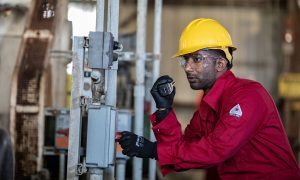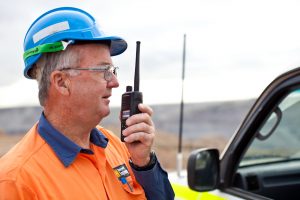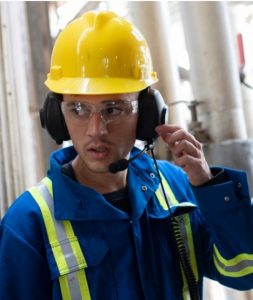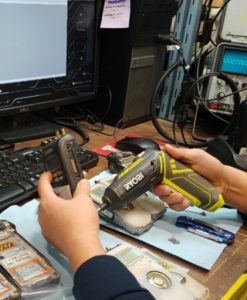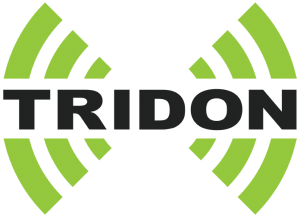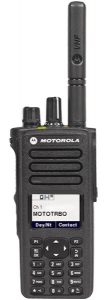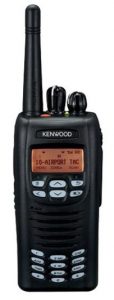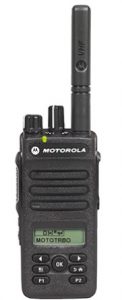Need intrinsically safe radios for your project?
CONTACT US
Two-way radios help enhance productivity and ensure worker safety, making them essential communication tools for Canadians on the job site. The need for communication only increases when work is conducted in hazardous environments (refineries, water treatment plants, lumber mills, etc.). This is where intrinsically safe two-way radios come into play.
Tridon supports customers across Alberta in a range of industries – oil and gas, forestry, utilities, manufacturing, and so on. We recommend, provide, and support intrinsically safe two-way radios on a regular basis, and we let customers know what level of intrinsic safety is necessary, or if it’s needed at all.
So, here are answers to the most common questions we get about intrinsically safe radios for you to consider before investing in a communications solution.
What Does Intrinsically Safe Mean?
‘Intrinsically Safe’ -or IS – refers to the way two-way radios (and other electronics) are designed. The design means the radio is incapable of causing a mixture of flammable or combustible material in air, at the mixture’s most easily ignited concentration, to ignite.
To put that in layman’s terms: where conventional two-way radios might generate a spark or some other source of ignition, intrinsically safe radios cannot. This means IS radios will allow your team to safely communicate in hazardous environments where flammable or combustible dust, vapours, gases, and liquids are present.
Do I Actually Need Intrinsically Safe Two-Way Radios?
It depends on your working environment. If you are in a defined hazardous area, then yes, intrinsically safe two-way radios are mandatory.
If your team was working in an industrial setting like the Fort McMurray Oil Sands, a gas refinery, a pulp and paper mill, and so on, then intrinsically safe two-way radios might actually be required by law (contact or visit any of our locations for more details on the OHS legislation) . That’s because concentrations of material such as dust, vapour, or gas in the air are high enough that they could combust should an ignition source be present.
On the other hand, a Fort McMurray recreation centre would not generally be considered a hazardous environment. Neither would West Edmonton Mall or the Edmonton Convention Centre. Flammable or combustible materials are not expected to be present, in either normal or abnormal operating conditions. Because of this, conventional two-way radios, with adequate IP Rating to keep out water and dust, would be enough to provide safe communication. Click here read our blog on that topic.
The sophisticated design of intrinsically safe two-way radios means that workers in a hazardous environment can communicate safely with managers and other team members throughout their entire shift.
Ensuring worker safety is just one reason to confirm the need for IS radios; another is cost. The sophisticated design and componentry of IS radios make them more expensive than non-IS radios.
What Level of Intrinsic Safety Do I Need?
It all comes down to knowing your environment and finding the level of intrinsic safety that’s tailored to it. Your Client Support Specialist at Tridon can guide you through the complex system.
A radio’s IS designation is made up of three parts: The Class, The Division, and The Group, and your working environment determines what the right combination is. Here’s a breakdown on the classification system.
Class is defined by the industry type in which the equipment will operate in:
Class I – Petroleum / Oil / Gas
Division I: Where ignitable concentrations of gases, vapours or liquids can exist all or some of the time under normal operating conditions.
Division 2: Where ignitable concentrations of gases, vapours or liquids are not likely to exist under normal operating conditions.
Class II – Heavy Engineering (Iron Ore/ Magnesium/ Coal/ Chemical), Food Industry (Starch/ Grain Processing)
Division I: Where combustible dust is or may be in suspension continuously, intermittently, or periodically, under normal operating conditions in quantities sufficient to produce explosive or ignitable mixtures.
Division 2: Where combustible dust may be in suspension in the air as a result of infrequent malfunctioning of handling or processing equipment, but such dust would be present in insufficient quantities.
Class III – Industries Dealing with Fibers (Saw Mills/ Textile Mills/ Flax Processing Plants)
Division I: Where readily ignitable fibers or materials producing combustible flyings are handled, manufactured or used.
Division 2: Where readily ignitable fibers other than those in process of manufacture are stored or handled.
Groups are types of atmospheres, ranging from A to G.
Group A – Consisting of atmospheres containing Acetylene gas.
Group B – Consisting of atmospheres containing Butadiene, Ethylene Oxide, Hydrogen (or gases or vapours equivalent in hazard to Hydrogen such as manufactured gas) or Propylene Oxide.
Group C – Consisting of atmospheres containing acetaldehyde, cyclopropane, diethyl ether, ethylene, hydrogen sulphide, or unsymmetrical dimethylhydrazine (UDMH) or other gases or vapours equivalent in hazard.
Group D – Consisting of atmospheres containing acetone, acrylonitrile, alcohol, ammonia, benzene, benzol, butane, ethylene dichloride, gasoline, propane, propylene, styrene, vinyl acetate, vinyl chloride, xylenes, or other gases or vapours of equivalent hazard.
Group E– Consisting of atmospheres containing combustible metal dust including aluminum, magnesium, and their commercial alloys, and other metals of similarly hazardous characteristics.
Group F– Consisting of atmospheres containing carbon, black, coal or coke dust.
Group G– Consisting of atmospheres containing flour, starch or grain dust or other dusts of similarly hazardous characteristics.
We understand that this can seem overwhelming. Our team of Client Support Specialists have the knowledge and expertise to navigate the intricacies of intrinsic safety to provide you and your Safety department with a list of options from top tier manufacturers that match your intrinsic safety requirements. You can Contact Us anytime if you have questions.
What About Accessories?
You have to use intrinsically safe accessories with IS Radios, and they need to be the same classification as the radio itself. Remember, IS electronics provide safety by operating at a power too low to generate a spark; non-IS electronics don’t have this precaution built in. If one is used in a hazardous environment, it could be a source of ignition.
This is why the CSA also tests anything with a physical connection to an IS radio, like a battery, lapel mic, or headset. For safe communication to ensured, the radio and all the equipment used with it must be intrinsically safe.
This is another reason to leverage Tridon’s team of sales professionals. We can marry your requirements with available options to ensure you have the right tools from day one.
Can I Rent IS Radios?
Absolutely. Tridon provides intrinsically safe radios for purchase or rental at our Edmonton, Fort McMurray, and Athabasca locations.
Sometimes our customers need intrinsically safe radios for short term projects, like planned shutdown at a refinery or seasonal maintenance at a lumber mill. If this is the case, renting IS radios makes sense.
If you have any questions about renting IS radios, Contact Us and we’ll answer them.
Can My Current Supplier Repair Them?
This is one of the most important questions. Various outlets will sell or rent you an intrinsically safe radio. But repairing them is more complicated than repairing non-IS devices.
In Canada, by law, a facility must be certified by the Canadian Standards Association (CSA) before any technician working there is authorized to repair an intrinsically safe two-way radio or accessory. Tridon has this certification and has maintained it for years.
To obtain it, our main two-way radio suppliers – Motorola Solutions and Kenwood – had to review the process we usedto inspect and repair intrinsically safe equipment, then report their approval to the CSA. To put this another way, Motorola and Kenwood have trusted Tridon for years to maintain and repair their intrinsically safe radios just as well as they would have.
This trust doesn’t come easily either. IS radios are critical communications devises, essentially serving as a communication lifeline for teams working in hazardous locations. If steps are skipped in the repair process, or a technician doesn’t have the required expertise or knowledge, an IS radio can end up being improperly repaired. If that happens, it could potentially be a source of ignition.
When it comes to providing parts for intrinsically safe radio repair, Motorola and Kenwood are just as selective. If a vendor’s repair process falls below their standards, then that vendor won’t receive IS replacement parts and will effectively be blocked from repairing intrinsically safe radios.
So, before you buy or rent intrinsically safe radios or accessories, ask your provider. “Are you CSA-certified?”. If they are, it means they can repair your purchased radios whenever you need. It also means that they have the ability to fully inspect and repair every IS radio they rent. The bottom line to you is the assurance that your team will have safe, loud and clear communications in hazardous work environments.
Talk to Our Experts
If you’re new to intrinsically safe two-way radios, or if you just want to double check and make sure you have the right equipment, Contact Us. Our team of communications experts are ready to answer all of your questions and make a recommendation based on your work environment, budget, and project needs.
Here are some of the intrinsically safe radios currently supporting our clients in the field.
Motorola MOTOTRBO XPR 7580e Portable Two-Way Radio
With this dynamic evolution of MOTOTRBO™ digital two-way radios, you’re better connected, safer and more productive. The XPR™ 7000e Series is designed for the skilled professional who refuses to compromise. With high-performance integrated voice and data, and advanced features for efficient operation, these next-generation radios deliver complete connectivity to your organization.
Here’s what’s new in these next-generation radios:
- Integrated accelerometer for optional Man Down
- Bluetooth® 4.0
- Indoor location tracking
- Integrated Wi-Fi
- Over-the-air software updates
- Enhanced audio quality
- Improved expandability,
- Better battery life (up to 29 hours)
Kenwood NX-200/300 ABP
Kenwood’s NX-x00 series portable lets your team make the call with confidence. This radio is intrinsically safe, and CSA certified for Class I, Division 1: perfect for use in hazardous environments, including oil and gas, construction, forestry, farming and manufacturing industries.
Both digital and analog compatible, the NX-x00 series portable has a compact, lightweight design. The clear backlit display and ergonomic controls enhance operating ease, while the rugged MIL-STD construction ensures all-weather reliability.
Motorola MOTOTRBO XPR 7550 IS Portable Two-Way Radio (CSA)
Safe, reliable communications are absolutely critical in hazardous environments, whether it’s the mine supervisor working underground or the petrochemical worker maintaining a pipeline. The MOTOTRBO™ XPR 7550 IS CSA portable keeps your workers connected safely and productively, wherever the job takes them.
Motorola’s best-in-class audio and unrivaled data capabilities empower people like never before. Available in Canada only, the XPR 7550 IS is certified by CSA as intrinsically safe and also features an integrated GPS module, full keypad with display, five programmable buttons, emergency button, and meets IP67 specifications for submersion in water.
Motorola MOTOTRBO XPR 3500e Portable Two-Way Radio
With this dynamic evolution of MOTOTRBO™ digital two-way radios, you’re better connected, safer and more efficient. The XPR™ 3000e Series is designed for the everyday worker who needs effective communications. With systems support and loud, clear audio, these next-generation radios deliver cost-effective connectivity to your organization.
Here’s what’s new in these next-generation radios:
- Integrated Wi-Fi
- Over-the-air software updates
- Bluetooth® 4.0 (future)
- Enhanced audio quality
- Improved expandability
- Better battery life (up to 28 hours)
- Better range (up to 8%)
- Better waterproofing (IP67)
- HazLoc models available
Tridon is a full solution Telecom Systems Integrator with CSA certification and licensed by APEGA. Our Engineering, Service and Tower Divisions collaborate with customers to build engineered solutions including communications systems design, tower inspections and co-location, wireless broadband, fiber optic cabling, site security, and two-way radio communication.

